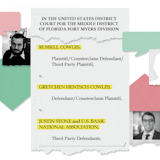The stroke of a pen on a simple document sealed his marriage 10 years ago. Now, buried in paperwork and unable to afford an attorney, Luis Hernandez can't seem to get divorced.
"I thought it was going to be easier," he said. "But I still haven't gotten a divorce and it's been several months."
So Hernandez turned to a self-help legal center in Anoka County to figure out his next steps.
What began as a pilot program in 2015 to help people like Hernandez has since expanded to each of the 10th Judicial District's eight counties, which include the northeast metro area. Staff attorneys now keep hours and rotate among self-help centers in Anoka, Chisago, Isanti, Kanabec, Pine, Sherburne, Washington and Wright counties.
Minnesota's district courts are working to meet the demand for self-help services, fueled in large part by litigants' desire to save money and their own do-it-yourself ambition. That means launching more legal clinics and undertaking collaborations with bar associations and law libraries.
The 10th Judicial District effort marks the latest push to expand self-help legal center locations and provide in-person assistance for those braving the courts without an attorney.
While staffers do not provide legal advice, they do offer information on court procedures and help self-represented or pro se litigants get their legal forms in order, among other services.
Hennepin County District Court already runs two self-help centers in downtown Minneapolis, at the Government Center and the Family Justice Center. Ramsey County offers a self-help center for assistance strictly in family court matters. More than 53,000 people turned to the state's various walk-in centers last year.


